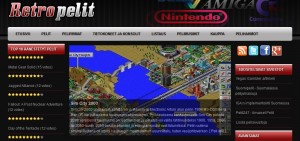TOBU Discs Kyng Roller Review
After the release of the TOBU Discs Charge, the team behind the first PDGA approved discs with electronics built into it has released their second disc, the Kyng Roller. The TOBU Discs Kyng Roller is an understable fairway driver designed for an easy flight for beginners and easy rollers for more experienced players.
TOBU Discs recently sent us a Kyng Roller and their new Starlite insert to test on the course and to test after dark with the new LED Starlite option.
The Kyng Roller has a rim slightly larger than the Charge (1.8 cm vs 1.7 cm), but it still very easy to get a grip on. This isn’t a very high speed driver and shouldn’t be intimidating to anyone. You’ll also find the three different textured areas of the rim to help give you the grip you desire. There is a smooth section, a finely textured area and a coarse area. Regardless of where you grip the Kyng Roller, you should find a lot of confidence in your grip before you give it a rip down the fairway.
It didn’t take many throws to see just how understable the Kyng Roller is and how it did live up to its name. With an arm strength of around 350 feet, we saw a very natural roller with how much effort. We took the Kyng Roller and aimed slightly left of center. With a full power throw and a flat release, the Kyng Roller got up to speed quickly before kicking into a pretty quick turn. After maybe 100 feet in the air, the Kyng Roller began to turn and went from a flat angle to hitting the ground at about a 60-70 degree angle. It didn’t lose a lot of energy when it hit the ground and continued to roll until it sat at a perfect 90 degree angle to the ground. The roller continued for a longer shot than we expected and finished with a very subtle “roller fade” where it curled around to the right before falling down.
We were able to pull off many more rollers like this by just giving it a strong throw and enough height to carry out that initial turn. The disc did the rest of the work. You can easily take a little power off of it, but you’ll need to give it a little extra anhyzer yourself.
To simulate throws for those with a slower arm speed, we pulled back on some of the power we were giving the Kyng Roller and produced shots with a slight s-curve or a straighter shot with a soft fade at the end. From standstill throws the Kyng Roller didn’t need much to show a little bit of turn until it showed a very moderate fade at the end of the flight. It was just enough to bring it back to the left past the center line, but it won’t do too much for you. Beginners shouldn’t find much to dislike about the flight. It won’t fade out too early at all and the natural understable flight path will help you gain a little distance.
The Kyng Roller will naturally want to hit the ground and do more work as a roller than in the air, but with the right amount of power behind it, you’ll be able to still produce some nice air shots with some control.
Overall, we’d rate the TOBU Discs Kyng Roller at 8, 4, -5, 1. It won’t take much to get it up to speed and while it has a nice amount of glide, due to the strong turn, it really won’t be a factor. There is a hint of fade at the end of the flight which you’ll see when you don’t quite put 100% power behind the Kyng Roller.
The TOBU Discs Kyng Roller has something for everyone, but it is one of the easiest roller discs out of the box we’ve thrown. It just needs a little height some power and it will hit the ground and do the rest. A little less power will produce some straighter shots in the air and you should be able to control it quite a bit. Dial in that power and release angle and you’ll be set.
Starlite LED Insert
TOBU Discs also sent us their second insert for all of their discs. The Starlite insert has three bright LED lights to help you locate your disc for those night golf rounds we love, especially in the fall. Once you remove the paper between the battery and the device itself all it takes is a light press on the top of the disc to activate it.
The Starlite has a slight twinkle to it to simulate how a star looks in the sky. You’ll be able to easily see the lights through the top or bottom of the disc. The lights won’t illuminate much of the disc beyond the true center, but the glow is quite bright. If this is resting in the middle of the fairway, you’d have no problem finding it. As long as the center of the disc is visible, the lights will help you find it in low light situations. When we kept the Kyng Roller in storage, we had to unscrew the housing slightly after turning it off so it wouldn’t turn on with a light touch. We didn’t want to wear the battery out.
While you can only use the Starlite insert on two discs, the Charge and Kyng Roller, this option sure beats taping LEDs onto the top or bottom of the disc. Being able to see the light illuminate more of the disc would be nice, but we won’t press our luck.
We wanted to capture a photo of it, but with such low light around us and trying to focus on three little LEDs doesn’t produce a photo that accurately shows the true results.
New housing brings louder volume

TOBU Discs also gave us a look at their new housing that has holes in the screw on cap. Previously, the internal electronics weren’t waterproof and the waterproof housing itself took care of that. After finding a way to make the electronics fully sealed, they were able to develop a cap with holes to help the sound escape from their tracking insert. It screws on the same way, but the volume is louder.
Water and dirt can now enter the housing without causing any problems. New discs produced by TOBU Discs will have this new unit with it. Don’t be alarmed when you see the holes. Everything inside is buttoned up and ready to go. You won’t have to worry about any problems with water and electronics.
The post TOBU Discs Kyng Roller Review appeared first on All Things Disc Golf.



